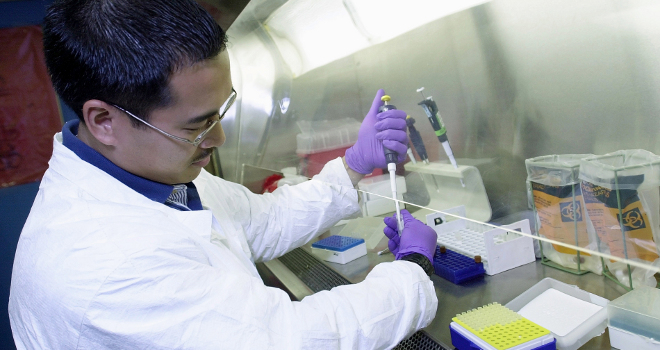Updated 4.06 p.m. E.S.T.
Black and Latino workers collectively account for roughly a quarter of the entire U.S. workforce, but fill only 12 percent of the country’s science and technology jobs. Although Asian workers account for only five percent of the total U.S. workforce, they account for 14 percent of the science, technology, engineering and math workforce — a disproportionally large figure that has actually increased in the last decade. Meanwhile, the share of blacks and Latinos participating in these fields has seen virtually no growth over the same period, according to a new report from the Department of Commerce.
The report, unveiled Monday at the Brookings Institution by Acting Commerce Secretary Rebecca M. Blank, concludes that blacks and Latinos remain severely underrepresented in the STEM fields in the United States. Much of the deficit can be attributed to lagging education rates for some minority groups, Blank said.
The report is the third and final one on the current demographics of the U.S. STEM workforce from data gathered by the Economics and Statistic Administration. The first, released in July, profiles STEM workers, and their importance in furthering American competitiveness and innovation. The second, released in August, looks at trends in education and employment of women in the field of STEM.
The latest report found that compared to whites and Asians, members of other ethnicities are much less likely to pursue higher education in general, and degrees in STEM fields in particular.
Even after completing their training, graduates of STEM programs rarely end up working in a STEM-related job. Improving minority education, said Blank, will offer major benefits to companies suffering from the current shortage of STEM workers in the United States.
Commerce’s ESA reports that 20 percent of STEM workers are born abroad, and 63 percent of that population are from Asia.
“It’s going to be important for the U.S. to expand the pool of talent for these jobs, in order to retain these industries here in the United States,” said Blank. “The STEM workforce is key to the long-term competitiveness of U.S. manufacturing and U.S. non-manufacturing in a global economy.”
The report’s demographic findings are surprising given how many incentives there are to working in STEM fields. STEM workers earn more overall than those in non-STEM fields. Black STEM workers in particular earn 39 percent more than their non-STEM counterparts, and the figure for Latinos is 36 percent.
In fact, what Blank called the “wage premium” between STEM and non-STEM employees was even larger for these underrepresented groups than it was for whites.
Why minority STEM employment lags is also puzzling when STEM jobs have proven to be largely recession-proof. The demand for STEM workers has actually increased faster than the demand for non-STEM jobs in recent years, said Blank. STEM workers also see lower rates of unemployment on average compared to the wider workforce.
Bridging the gap between high demand for STEM workers and low supply will require strategic investments in education, she said.
Improving the compensation and status associated with K-12 teaching is the first step, according to James Simons, a venture capitalist and former math instructor at Harvard University who spoke as part of today’s Brookings event.
“Simply training people to do these jobs is not enough,” said Simons. “Because if the job isn’t very good, they might enter — but they’re not going to stay.”
Appearing alongside Simons were Charles M. Vest, president emeritus of the Massachusetts Institute of Technology, and Charles Giancarlo, a managing director at the private investment firm Silver Lake and a former senior executive at Cisco Systems.
Giancarlo proposed expanding the United States’ H-1B visa program to help keep highly trained foreign workers and students in the country after making expensive investments in their education.
“We’re educating students only to send them back,” said Giancarlo. “It’s a crime in the first place that we have to draw them from overseas, but then it’s pouring salt in our own wound to actually send them home for lack of H-1B visas.”
Giancarlo added that the shortage of visas has become so severe that Cisco now has a facility in Canada to accept graduates of American institutions that cannot stay in the United States.
For his part, Vest suggested mobilizing pop culture leaders and the larger entertainment industry to convince students to pursue careers in science and technology. Among the influencers Vest cited were children’s television shows like “Sesame Street” and musicians such as Will.i.am.
“I think you all know what happened to forensic science curricula around the country after ‘CSI’ went on the air,” said Vest. “Those things are, ultimately, probably more important than what those of us who sit in this room can do.”









